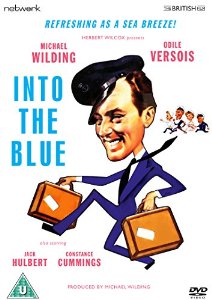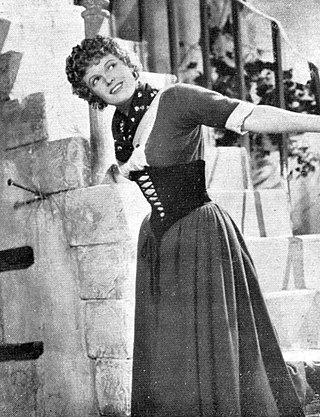
Dame Florence Marjorie Wilcox, known professionally as Anna Neagle, was an English stage and film actress, singer, and dancer.

Michael Charles Gauntlet Wilding was an English stage, television, and film actor. He is best known for a series of films he made with Anna Neagle; he also made two films with Alfred Hitchcock, Under Capricorn (1949) and Stage Fright (1950); and he guest starred on Hitchcock's TV show in 1963. He was married four times, including to Elizabeth Taylor, with whom he had two sons.

The White Ensign, at one time called the St George's Ensign because of the simultaneous existence of a crossless version of the flag, is an ensign worn on British Royal Navy ships and shore establishments. It consists of a red St George's Cross on a white field, identical to the flag of England except with the Union Flag in the upper canton.

Constance Cummings CBE was an American-British actress with a career spanning over 50 years.

Passport to Shame, is a 1958 British drama film directed by Alvin Rakoff and starring Diana Dors and Herbert Lom. It was written by Patrick Alexander.

Herbert Sydney Wilcox CBE was a British film producer and director.
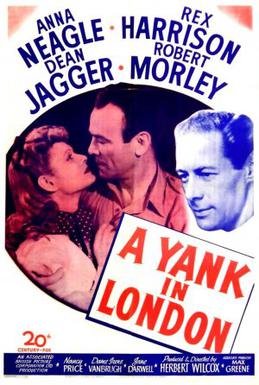
I Live in Grosvenor Square is a British comedy-drama romance war film directed and produced by Herbert Wilcox. It was the first of Wilcox's "London films" collaboration with his wife, actress Anna Neagle. Her co-stars were Dean Jagger and Rex Harrison. The plot is set in a context of US-British wartime co-operation, and displays icons of popular music with the purpose of harmonising relationships on both sides of the Atlantic. An edited version was distributed in the United States, with two additional scenes filmed in Hollywood, under the title A Yank in London.

Forever and a Day is a 1943 American drama film, a collaborative effort employing seven directors/producers and 22 writers, with an enormous cast of well-known stars.
William Percy Lipscomb was a British-born Hollywood playwright, screenwriter, producer and director. He died in London in 1958, aged 71.

Derby Day is a 1952 British drama film directed by Herbert Wilcox and starring Anna Neagle, Michael Wilding, Googie Withers, John McCallum, Peter Graves, Suzanne Cloutier and Gordon Harker. An ensemble piece, it portrays several characters on their way to the Derby Day races at Epsom Downs Racecourse. It was an attempt to revive the success that Neagle and Wilding had previously enjoyed on screen together. To promote the film, Wilcox arranged for Neagle to launch the film at the 1952 Epsom Derby.
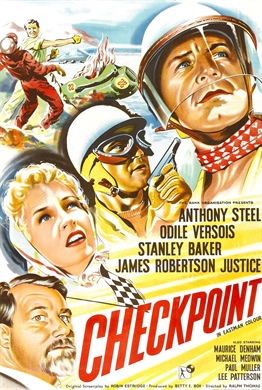
Checkpoint is a 1956 British crime drama film directed by Ralph Thomas and starring Anthony Steel, Odile Versois, Stanley Baker, and James Robertson Justice.

Elizabeth of Ladymead is a 1948 British Technicolor drama film directed by Herbert Wilcox and starring Anna Neagle, Hugh Williams, Isabel Jeans and Bernard Lee. It charts the life of a British family between 1854 and 1945 and their involvement in four wars - the Crimean War, Boer War, First World War and Second World War. In each era a Beresford is in the army and dresses in the uniform of the age in most scenes, even at home.

Piccadilly Incident is a 1946 British drama film directed by Herbert Wilcox and starring Anna Neagle, Michael Wilding, Coral Browne, Edward Rigby and Leslie Dwyer.

Maytime in Mayfair is a 1949 British musical romance film directed by Herbert Wilcox and starring Anna Neagle, Michael Wilding, Nicholas Phipps, and Tom Walls. It was a follow-up to Spring in Park Lane.
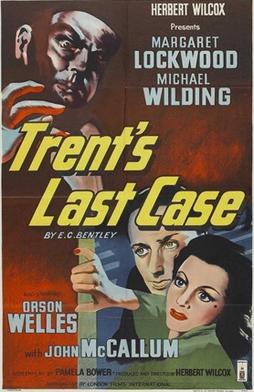
Trent's Last Case is a 1952 British detective film directed by Herbert Wilcox and starring Michael Wilding, Margaret Lockwood, Orson Welles and John McCallum. It was produced by Wilcox as part of a distribution agreement with Republic Pictures. It was based on the 1913 novel Trent's Last Case by E. C. Bentley, and had been filmed previously in the UK with Clive Brook in 1920, and in a 1929 US version.

Trouble in the Glen is a 1954 British comedy film directed by Herbert Wilcox and starring Margaret Lockwood, Orson Welles, Forrest Tucker and Victor McLaglen. It is loosely based on Maurice Walsh's 1950 novel of the same name. It was filmed in Trucolor for Republic Pictures.

Act of Piracy is a 1988 American/South African thriller film directed by John Cardos and starring Gary Busey, Belinda Bauer and Ray Sharkey. While enjoying an exotic cruise to Australia, a family yacht is taken over by terrorists. It is also known as Barracuda.

The Young Lovers is a 1954 British Cold War romantic drama film directed by Anthony Asquith and starring Odile Versois and David Knight. The film was produced by Anthony Havelock-Allan, with cinematography from Jack Asher and screenplay by George Tabori and Robin Estridge. It was shot at Pinewood Studios with sets designed by the art directors John Box and John Howell. At the 1955 British Film Academy Awards, The Young Lovers picked up the prizes for Best Screenplay and Most Promising Newcomer to Film.
Everything Happens at Night is a 1939 American drama-comedy film starring Sonja Henie, Ray Milland and Robert Cummings.
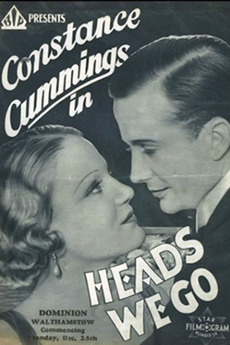
Heads We Go is a 1933 British comedy film directed by Monty Banks and starring Constance Cummings, Frank Lawton and Binnie Barnes. It was produced at Elstree Studios by British International Pictures.
